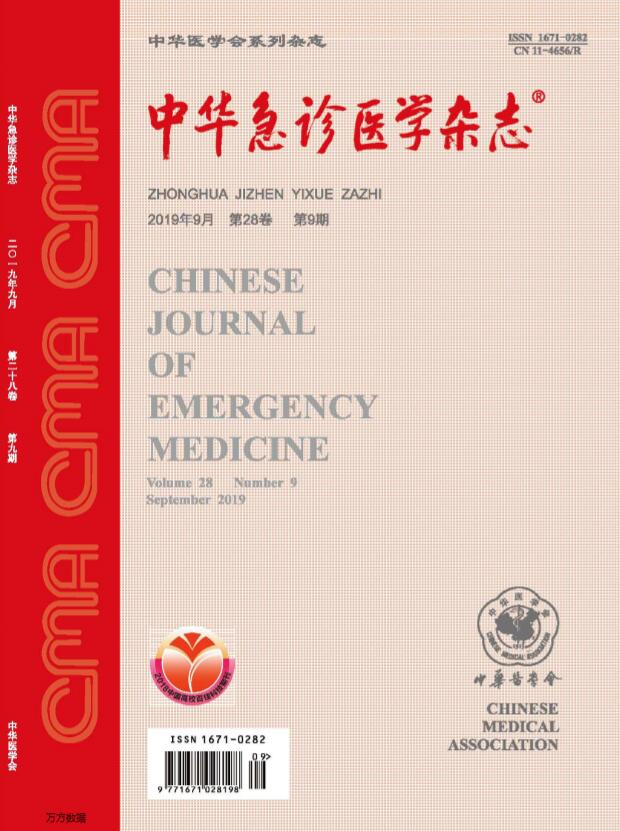The effect of noninvasive ventilation with the helmet compared with facial mask in patients with acute respiratory failure: a randomized controlled study
Q4 Nursing
引用次数: 0
Abstract
Objective To explore the effect of noninvasive ventilation (NIV) with helmet or facial mask on clinical efficacy, tolerability, and prognosis in patients with acute respiratory failure. Methods Fifty patients with acute respiratory failure according to the inclusion criteria were recruited from January 2018 to July 2018 in Emergency Intensive Care Unit of the First Affiliated Hospital of Zhengzhou University. Included patients were randomly allocated into the helmet group or facial mask group. Based on conventional drug therapy, pressure support mode was performed with the interface of the helmet or facial mask. Oxygenation index, arterial carbon dioxide partial pressure, and respiratory rates were measured before and after the treatment, and the data were compared and analyzed by the repeated measures ANOVA. Tolerance score, complication rate, tracheal intubation rate, and mortality rate were recorded at each observation time point of the two groups. Results The oxygenation index before NIV, at 4 h and at the end of NIV treatment of the helmet group were significantly increased from (160.29±50.32) mmHg to (249.29±83.47) mmHg and (259.24±87.09) mmHg; the oxygenation index of the facial mask group were increased from (168.63±38.63) mmHg to (225.00±74.96) mmHg and (217.69±77.80) mmHg, and there was no significant difference within the two groups (P 0.05). Patients in the helmet was better tolerated than those in the facial mask group [ratio of good tolerance 96% (24/25) vs 56% (14/25) (P = 0.001) and fully tolerance 80% (20/25) vs 36% (9/25) (P =0.002)] and had less complications (1/25 vs 10/25, P = 0.002). 84% patients in the helmet group and 76% patients in the facial mask group were successfully weaned and discharged after NIV treatment (P =0.480). Conclusions Similar clinical efficacy in improving blood gas exchange and relieving dyspnea were observed in the helmet group and the facial mask group in patients with acute respiratory failure. However, the helmet is better tolerant, and had lower complication rate, which is especially suitable for patients with chest trauma combined with facial injuries. Key words: Helmet; Facial mask; Noninvasive ventilation; Acute respiratory failure; Chest trauma; Randomized controlled trial头盔与面膜无创通气对急性呼吸衰竭患者的影响:一项随机对照研究
目的探讨头盔或面膜无创通气(NIV)对急性呼吸衰竭患者的临床疗效、耐受性和预后的影响。方法根据纳入标准,于2018年1月至2018年7月在郑州大学第一附属医院急诊重症监护室招募50例急性呼吸衰竭患者。纳入的患者被随机分为头盔组或面膜组。在传统药物治疗的基础上,通过头盔或面膜的接口进行压力支持模式。在治疗前后测量氧合指数、动脉二氧化碳分压和呼吸频率,并通过重复测量方差分析对数据进行比较和分析。记录两组在每个观察时间点的耐受性评分、并发症发生率、气管插管率和死亡率。结果头盔组NIV前、4 h及NIV结束时氧合指数由(160.29±50.32)mmHg显著升高至(249.29±83.47)mmHg和(259.24±87.09)mmHg;面膜组氧合指数由(168.63±38.63)mmHg增至(225.00±74.96)mmHg和(217.69±77.80)mmHg,头盔组患者耐受性优于面膜组[良容率96%(24/25)vs 56%(14/25)(P=0.001),全容率80%(20/25)vs 36%(9/25)(P=0.002)],并发症较少(1/25 vs 10/25,P=0.002)结论头盔组和面膜组急性呼吸衰竭患者改善血气交换、缓解呼吸困难的临床疗效相似。然而,该头盔具有更好的耐受性,并发症发生率较低,特别适合胸部创伤合并面部损伤的患者。关键词:头盔;面膜;无创通气;急性呼吸衰竭;胸部创伤;随机对照试验
本文章由计算机程序翻译,如有差异,请以英文原文为准。
求助全文
约1分钟内获得全文
求助全文
来源期刊

中华急诊医学杂志
Nursing-Emergency Nursing
CiteScore
0.10
自引率
0.00%
发文量
8629
期刊介绍:
Chinese Journal of Emergency Medicine is the only national journal which represents the development of emergency medicine in China. The journal is supervised by China Association of Science and Technology, sponsored by Chinese Medical Association, and co-sponsored by Zhejiang University. The journal publishes original research articles dealing with all aspects of clinical practice and research in emergency medicine. The columns include Pre-Hospital Rescue, Emergency Care, Trauma, Resuscitation, Poisoning, Disaster Medicine, Continuing Education, etc. It has a wide coverage in China, and builds up communication with Hong Kong, Macao, Taiwan and international emergency medicine circles.
 求助内容:
求助内容: 应助结果提醒方式:
应助结果提醒方式:


